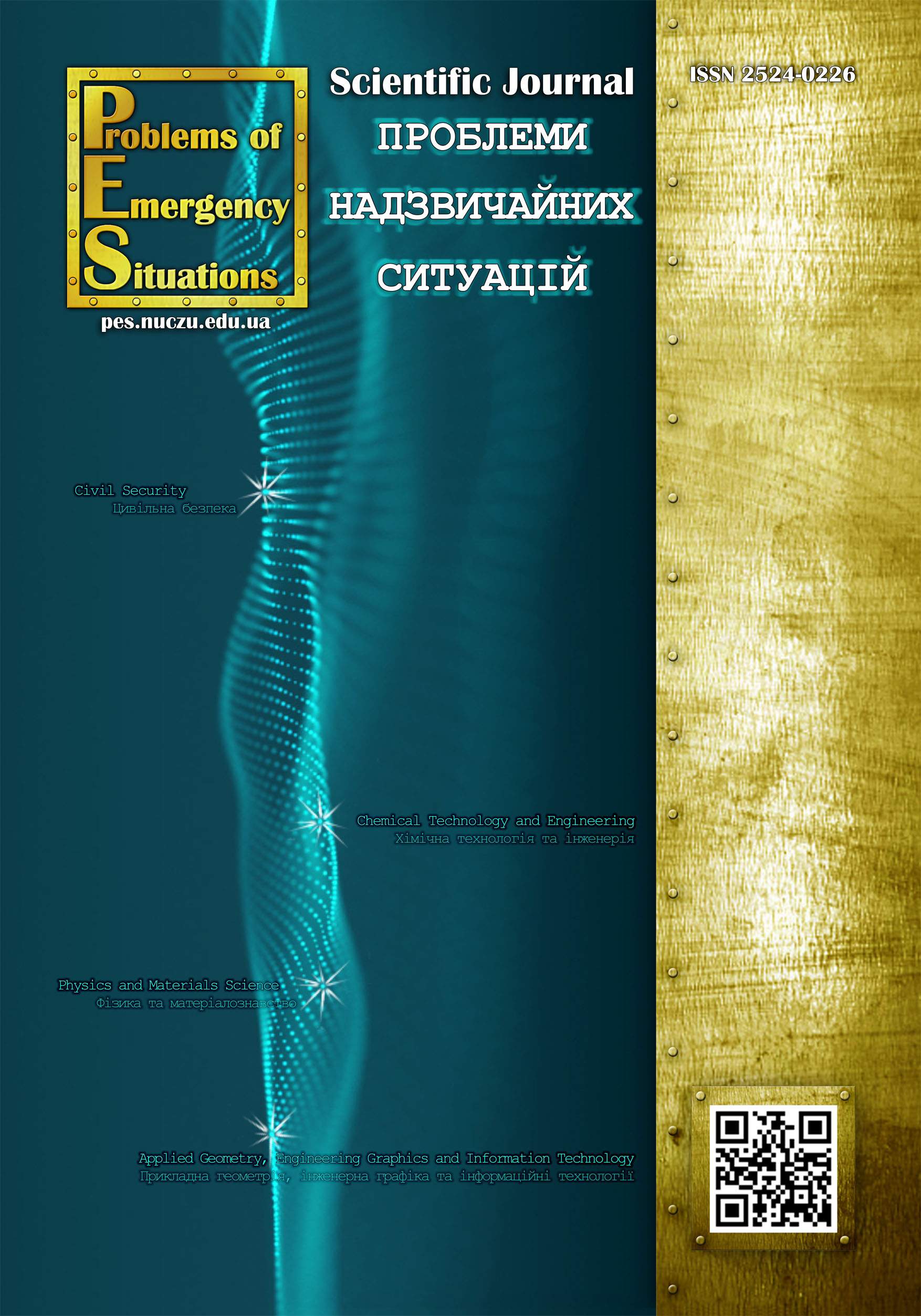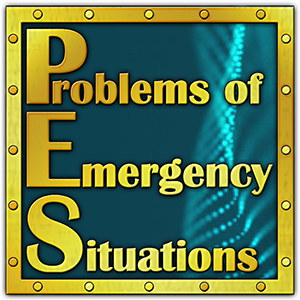Kinetics of chemical neutralisation of chlorine by a small dispersed water stream with a neutraliser
Lesko Andrei
National University of Civil Protection of Ukraine
https://orcid.org/0009-0003-2053-2362
Kulakov Oleg
National University of Civil Protection of Ukraine
https://orcid.org/0000-0001-5236-1949
Katunin Albert
Ivan Kozhedub Kharkiv National Air Force University
http://orcid.org/0000-0003-2171-4558
Maladyka Igor
Cherkasy State Technological University
http://orcid.org/0000-0001-8784-2814
DOI: https://doi.org/10.52363/2524-0226-2025-41-6
Keywords: chemical kinetics equation, chemical neutralisation, chlorine, model, small dispersed water stream
Аnnotation
The kinetics of chemical neutralization of chlorine when neutralizers are added to a fine water stream during precipitation is investigated. It has been shown that the activity of chemical neutralizers that can be added to a fine water stream is different in the chemical reaction with chlorine. The practical application of sodium hydroxide or calcium hydroxide as chemical chlorine neutralisers is proposed. On the basis of the model of chlorine neutralisation by a small dispersed stream of clean water, a mathematical model of chlorine neutralisation by a small dispersed stream of water with a chemical neutraliser was developed. The model is based on the assumption that during the chemical neutralisation of chlorine with a small dispersed water stream with a neutraliser, the chemical reaction rate is calculated according to the standard chemical kinetics equation. The kinetics of the process of chemical neutralisation of chlorine by a small dispersed water stream with sodium hydroxide has been studied. The addition of sodium hydroxide to the small dispersed water stream leads to an increase in the rate of neutralisation of gaseous chlorine over the full range of changes in the intensity of the small dispersed water stream with the neutraliser with dynamics similar to the case of neutralisation with pure water. It is recommended to limit the intensity of the supply of a small dispersed stream of water with the sodium hydroxide neutraliser to 1.5÷1.7 l/(s·m2). An increase in the concentration of the neutraliser in water will result in a significant increase in the rate of neutralisation of gaseous chlorine. For chemical neutralisation (deposition) of gaseous chlorine with a small dispersed water stream with the addition of sodium hydroxide, it is advisable to use concentrated mixtures. At an intensity of 2.0 l/(s·m2) of a small dispersed water stream and a concentration of 0.5 kg/kg of sodium hydroxide in the water, the rate of neutralisation of gaseous chlorine increases by 90 %, and at a concentration of 1.0 kg/kg – by 140 %.
References
- Toxic gas at Birmingham water treatment plant sends 55 workers to hospitals. Available at: https://www.al.com/news/birmingham/2019/02/multiple-ambulances-called-in-hazmat-incident-at-birmingham-water-treatment-plant.html
- Chlorine. Available at: https://en.wikipedia.org/wiki/Chlorine
- Pospelov, B., Rybka, E., Meleshchenko, R., Borodych P., Gornostal, S. (2019). Development of the method for rapid detection of hazardous atmospheric pollution of cities with the help of recurrence measures. Eastern-European Journal of Enterprise, 1(10((97)), 29–35.
- Yan, X., Zhou, Y., Diao, H., Gu, H., Li Y. (2020). Development of mathematical model for aerosol deposition under jet condition. Annals of Nuclear Energy, 142, 107394.
- Kustov, M. V., Melnychenko, A. S., Taraduda, D. V., Korogodska, A. M. (2021). Research of the chlorine sorption processes when its deposition by water aerosol. Scientific journal «Materials Science Forum» Switzerland: Trans Tech Publications Ltd, 1038, 361–373.
- Elperin, T., Fominykh, A., Krasovitov, B., Vikhansky, A. (2011). Effect of rain scavenging on altitudinal distribution of soluble gaseous pollutants in the atmosphere. Atmospheric Environment, 45(14), 2427–2433.
- Lesʹko, A. S. (2024). Intensyvnistʹ khimichnoyi neytralizatsiyi khloru pry osadzhenni dribnodyspersnym ridynnym potokom. Komunalʹne hospodarstvo mist. Seriya: tekhnichni nauky ta arkhitektura, 6(187), 278–283.
- Wei, L. (2011). Research on Countermeasures and Methods of Disposing Incidents of Hazardous Chemicals Reacting with Water. Procedia Engineering, 26, 2278–2286.
- Hydrochloric acid. Available at: https://en.wikipedia.org/wiki/Hydrochloric_acid
- Hypochlorous acid. Available at: https://en.wikipedia.org/wiki/
Hypochlorous_acid - Sander, R. (1999). Compilation of Henry’s Law Constants for Inorganic and Organic Species of Potential Importance in Environmental Chemistry. Mainz: Max-Planck Institute of Chemistry, 107. Available at: https://www.ready.noaa.gov/documents/
TutorialX/files/Chem_henry.pdf - Neutralisation of chlorine and sulphur dioxide. Available at: https://www.i4t.pl/
en/technologies/neutralisation-of-chlorine-and-sulphur-dioxide














